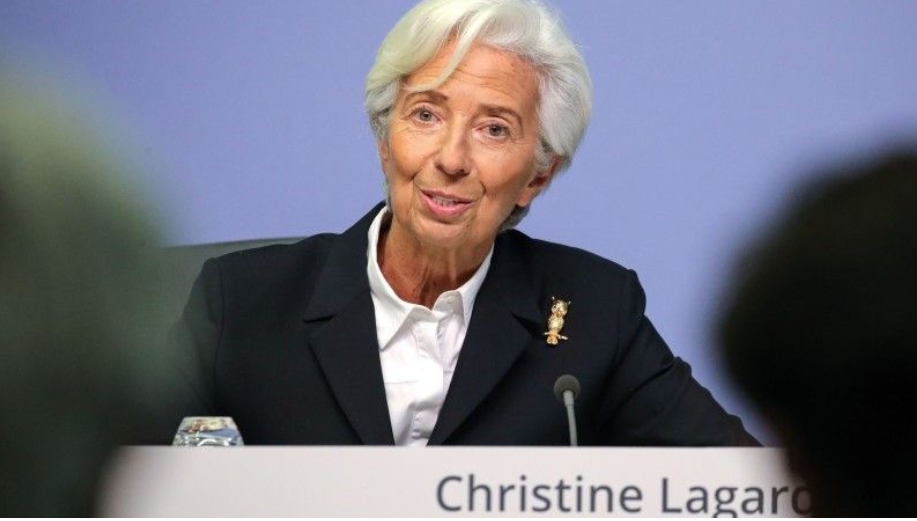ABN Amro venter, at ECB vil optrappe sine stimuli ved at udvide sine opkøb med yderligere 500 milliarder euro i løbet af i år – oveni de 750 milliarder euro, ECB allerede har bebudet. ECB ventes dog ikke at sænke renten yderligere, da det kan få en negativ virkning for bankerne.
Uddrag fra ABN Amro:
Global Daily – ECB
ECB Preview: PEPP to be stepped up by EUR 500bn, tiering multiplier to be increased – We expect the ECB to announce a further increase in the PEPP. We think that a step up of around EUR 500bn for this year will be announced on top of the EUR 750bn already communicated. There are a number of factors behind this view. First of all, the ECB has signalled a willingness to expand the PEPP and has given itself plenty of room to do so.
The Governing Council has stated that it is ‘fully prepared to increase the size of its asset purchase programmes and adjust their composition, by as much as necessary and for as long as needed’. At the same time, the legal text behind the PEPP states that purchases will not be included with the purchases of the other programmes in the consolidation to calculate issue(r) limits. In short, issuer limits do not count for this emergency programme.
Second, despite the current level of macro stimulus, inflation looks likely to very significantly undershoot the ECB’s inflation goal over the coming years. Indeed, if our projections for core inflation are right, deflation is no longer a tail risk. Third, although ECB and Fed announcements have helped to arrest the tightening, financial conditions remain very tight. The current tightness of financial conditions would in itself be consistent with contraction in GDP, the lockdown and other second round effects aside.
A key way the ECB is trying to arrest the tightening of financial conditions is by making sure that risk free rates and country spreads do not rise significantly. Yet a surge in bond supply is complicating that task and we think the ECB will step up purchases in order to absorb the additional issuance by sovereigns.
The Eurosystem’s total net asset purchases this year will be EUR 1.1 trillion, according to the current plans. Additional net asset purchases in response to the corona virus shock amount to EUR 870bn. Of this, we assume around EUR 475 will be government bonds. This will be insufficient to mop the extra government bond supply, which we estimate to be around EUR 700bn this year. A step up in the PEPP of EUR 500bn would be equivalent to roughly EUR 275bn in sovereign bond purchases. That would be enough to mop up additional government bond supply under our base scenario.
In addition to the step up in the PEPP, we think that the ECB could increase the multiplier that determines the volume of reserve holdings in excess of minimum reserve requirements that will be exempt from the deposit facility rate. It is currently set at 6 but could be gradually increased, with the first step taken at this meeting.
The ECB has noted that ‘it will set the multiplier such that euro short-term money market rates are not unduly influenced. The multiplier may be adjusted by the Governing Council in line with changing levels of excess liquidity holdings’. Given the significant step up in asset purchases, it is likely that excess liquidity will rise sharply over the coming months, which will allow for a higher multiplier. Meanwhile, there is a possibility that the ECB further loosens the conditions on the TLTRO programme, by reducing the lending rate further. We have somewhat less conviction about this given that the current conditions are still attractive enough to trigger enormous take up.
What will the ECB will refrain from doing? We do not expect the ECB to cut its deposit rate further. Executive Board member Isabel Schnabel explained recently why the ECB did not cut rates last month in response to the economic shock. She asserted that ‘a further cut in our main policy rate – the deposit facility rate – would have been unlikely to support sentiment and market functioning at a time when banks’ profitability was already expected to come under additional pressure due to the crisis’. This situation has not changed.
Meanwhile, there has also been speculation that the ECB will expand its corporate bond purchases to include high yield bonds that have been downgraded from an investment grade rating since the coronavirus shock hit. Although they have loosened their collateral requirements in such a fashion, we think the ECB will have a different attitude to the risks related to outright purchases compared to the acceptance of collateral. So although the chances of such a move have risen, we do not expect it in our base case.




